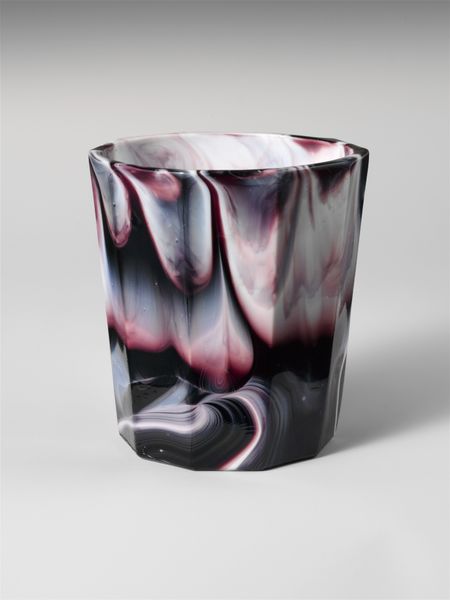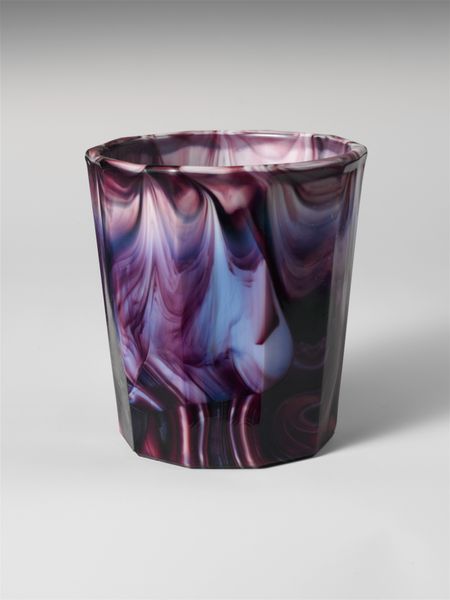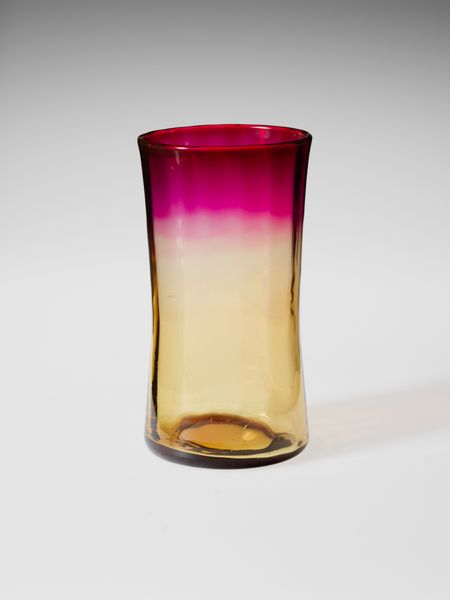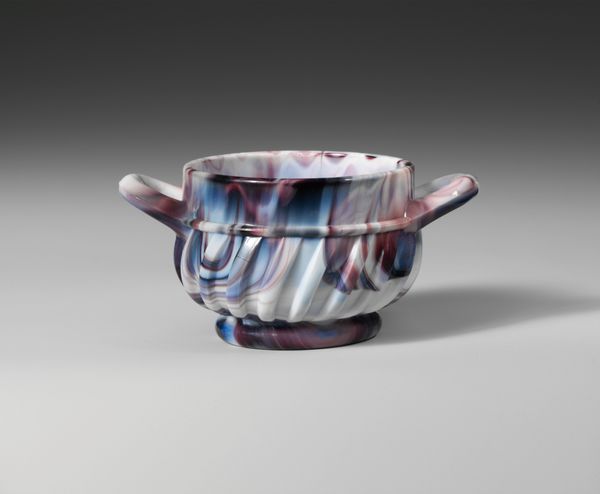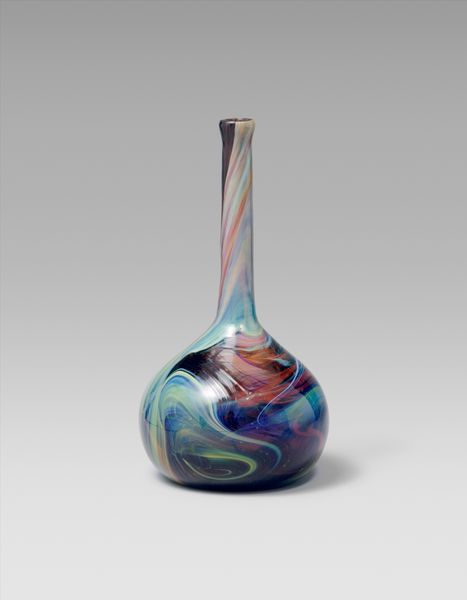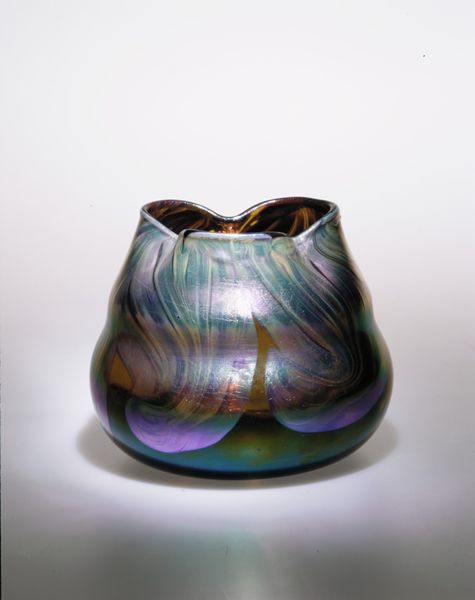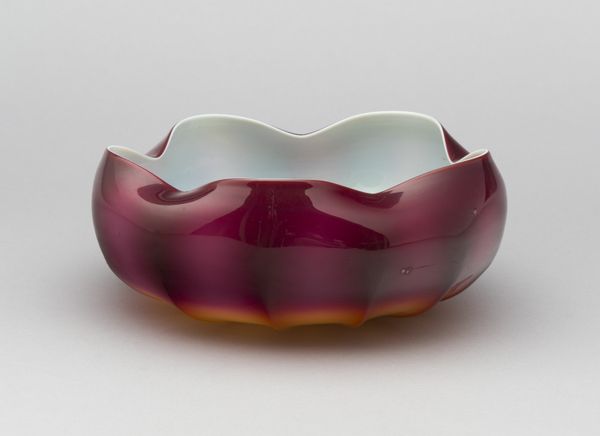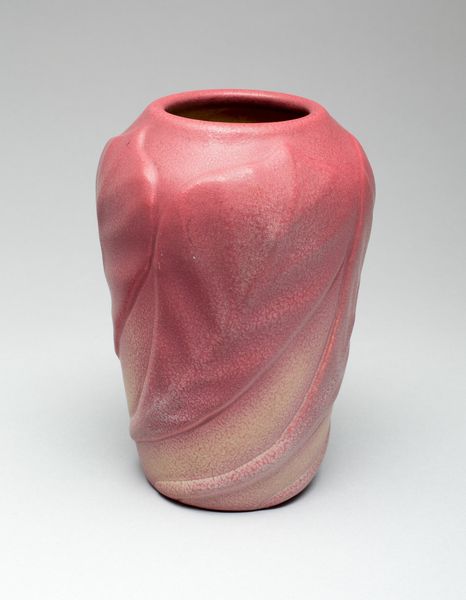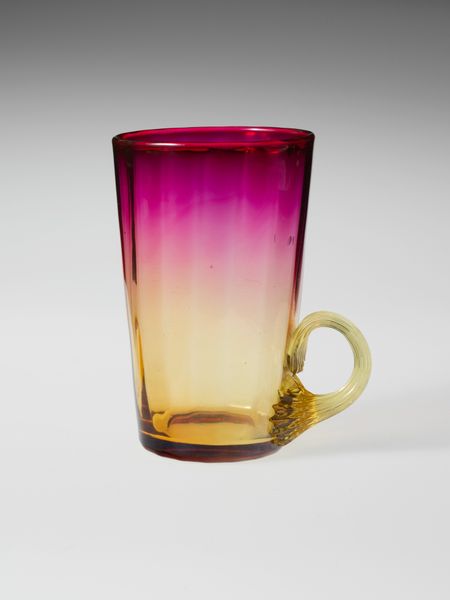
glass
#
product shot
#
3d printed part
#
virtual 3d design
#
glass
#
product design photgrpaphy
#
white focal point
#
3d digital graphic
#
metallic object render
#
product mock up
#
united-states
#
graphic design product photography
#
decorative-art
#
product render
Dimensions: H. 3 5/16 in. (8.4 cm)
Copyright: Public Domain
Editor: So, here we have a glass tumbler, believed to be made between 1870 and 1890 by Challinor, Taylor and Company. It’s currently housed in the Metropolitan Museum of Art. The colors swirling within the glass are really striking – purples, whites, dark reds. It makes me think of some kind of exotic nebula, frozen in place. What stands out to you when you look at this piece? Curator: Ah, a nebula indeed! Or perhaps a memory swirling in a potion bottle. What's captivating about this little gem is the unexpected blend of industry and artistry. This wasn't some solitary artist hunched over a furnace, but likely a mass-produced object, a product of American glass manufacturing aiming to capture the decorative market. Does that make it any less beautiful? I’d argue the opposite. The maker was working within constraints, a bit like a poet bound by meter and rhyme, channeling something almost magical, don't you think? What are your thoughts about that tension? Editor: I never really thought about mass production creating beautiful objects like this before. When I first saw it, the process didn’t even cross my mind. It’s fascinating to consider that this "functional" object could also be art. How did they achieve that swirled effect with the glass? Curator: That would be through a technique involving multiple layers of different colored glass, manipulated while molten. A bit like carefully folding colors into dough. Each tumbler would have its own unique pattern; you never quite know what you’re going to get when you coax materials into collaboration. Maybe that’s where the real art lies - the surprise of creation itself. This little piece embodies a moment, a particular creative experiment during an era obsessed with imitating the most exquisite materials. What did you find most intriguing? Editor: The combination of mass production with individual artistry definitely gave me something new to consider. Thanks! Curator: My pleasure, it's fascinating to look back, reinterpret, and reflect on art from past eras, and the lessons art history can teach us today!
Comments
No comments
Be the first to comment and join the conversation on the ultimate creative platform.
